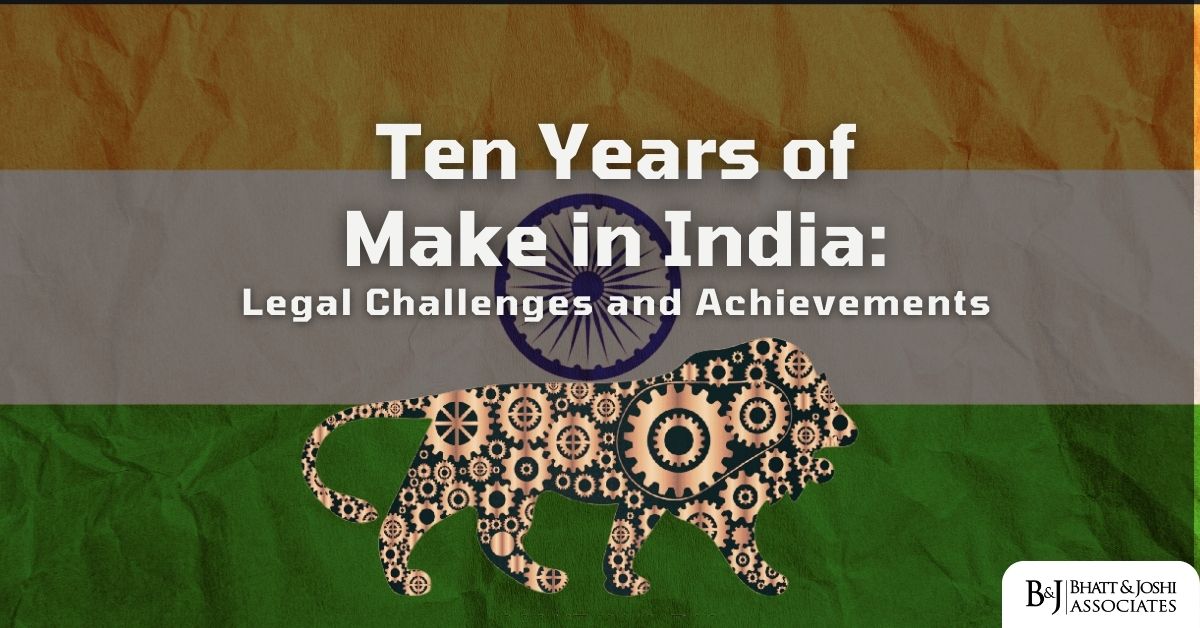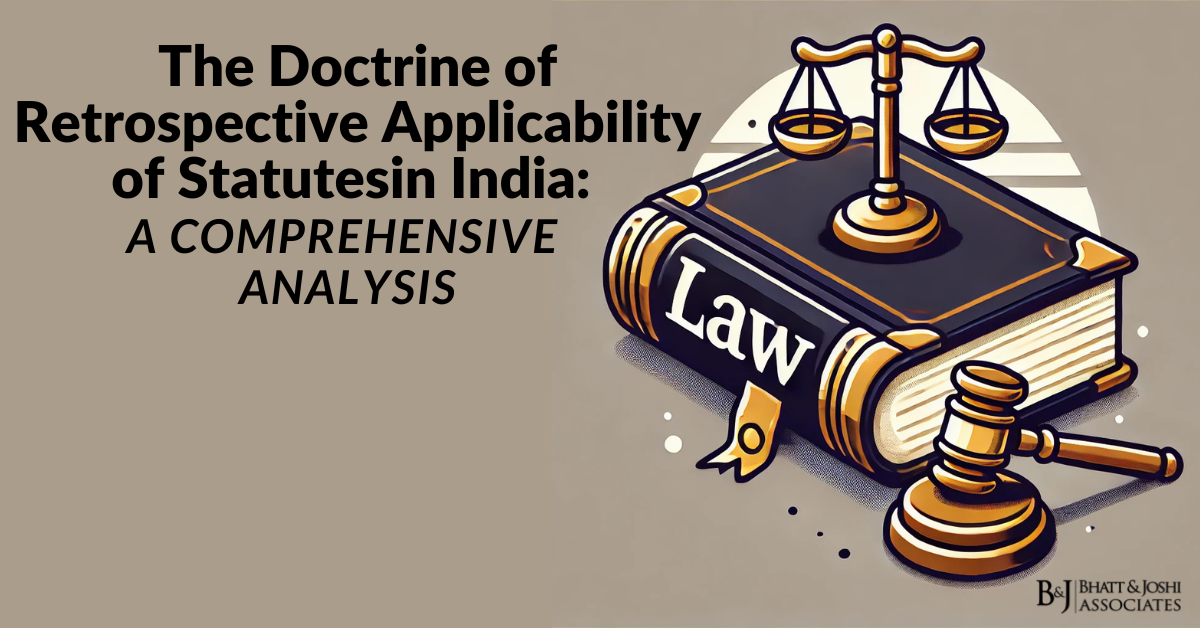Introduction
In September 2014, the Indian government established the “Make in India” program which sought to expand the operations of the Indian manufacturing sector while simultaneously gaining Foreign Direct Investments (FDI) and opening new avenues for jobs to promote economic advancement. As such, this program was wide in scope, and over the past decade has achieved many milestones while also facing a myriad of legal obstacles. This article examines the initiative’s regulatory framework, achievements, and challenges, and apprehends their relevant laws, case laws, and landmark judgments.
The Genesis of Make in India
The Make in India campaign was designed towards the objective of elevating India to be a preferred global manufacturing country, alongside improving the ease of doing business within India. The government picked out 25 sectors such as aviation, electronics, textiles, and automobiles for which India could achieve significant growth. Also, this initiative set out to alleviate red tape, modernize business systems, as well as improve underlying physical infrastructure.
There was always a legal underpinning to the program, which was designed to aid in industrial growth expansion. Policies like the Foreign Investment Policy, Special Economic Zones (SEZ) Act, and other subsector policies were formulated or modified to meet the requirements of the program. Legal reforms by the government created an emphasis on the need for a business-friendly environment, maintenance, and enhancement.
The timing of Make in India was critical as it coincided with the time when India wanted to pull out of the economically stagnant phase. The initiative aimed at industrial development along with providing solutions to rising unemployment and regional inequality. Integration of economic growth within institutional frameworks and reforms made the undertaking one of the most comprehensive in modern India and one of the most ambitious campaigns India has seen.
Legal Instruments Enabling Make in India
Everything centred around Make in India is completely dependent on there being a favourable legal and regulatory environment to make it work. Some of the important ones are listed below:
Foreign Direct Investment (FDI) Policy: The FDI policies were the most important parts of the make-in-India strategy. The government liberalized FDI restrictions on many industries like defence, aviation, retail and insurance. For example, the defence sector witnessed FDI caps increase from 26 per cent to 74 per cent under the automatic route with higher limits necessitating government scrutiny. These policies intended to bring in foreign investors and their latest technology to India. This was further aided by steps like loosening the controls on single-branded retail and allowing unrestricted foreign investment in contract manufacturing.
Insolvency and Bankruptcy Code (IBC), 2016: The IBC was introduced as a revolutionary policy aimed at dealing with failure for businesses as well as providing better exit routes for companies. The code brought huge improvements to India’s standing in the World Bank Ease of Doing Business Index as it simplified the process of corporate insolvency for a company. It sought to ensure that there was no uncertainty for a business seeking to invest in India on how long it would take to wind up and sell its assets.
Goods and Services Tax or GST: GST is considered an additional progressive measure under the Make in India scheme and was instituted in 2017. It replaced a complicated system of indirect taxes with an integrated tax system which minimized the cascading of taxes as well as enhanced ease of doing business. GST eliminated inefficiencies in the tax system and promoted manufacturing while lowering costs for businesses and consumers.
Reforms in Labor Laws: India’s labour laws have historically been viewed as uncoordinated and non-uniform. The government combined 29 Central Labor Laws into four Labor Codes: The Code of Wages, the Industrial Relations Code, the Social Security Code, and the Occupational Safety, Health, and Working Conditions Code. Such changes were intended to ease compliances and improve investment appeal. Such simplification also served to reduce foreign investor concerns who frequently named India’s labor policies as a major hurdle for doing business.
Act of 2005 regarding Special Economic Zone: Before the Make in India Initiative, Special Economic Zones, also referred to as SEZs, were already in existence but they were marketed as part of the campaign designed to increase foreign investment and the growth of exports. This scheme used the SEZ structure to offer tax allowances, expedited clearance of customs, and developed supportive infrastructure. SEZs became the focus of industrial activity, encouraging several states to compete in creating world-class facilities capable of attracting both foreign and domestic investors.
Like in the earlier stages of Make in India, The Production Linked Incentive (PLI) Scheme was introduced to target financial stimulus to increase manufacturing capabilities in key sectors including electronics, renewables, pharmaceuticals, and so on. The desired outcome was to reinforce India’s self-sufficiency while turning it into a ‘world factory.’ Another goal was to promote the adoption of sophisticated technology and advanced manufacturing techniques.
Achievements of Make in India
Make in India has reached remarkable milestones in the past decade. Manufacturing industries use up more GDP in comparison to India previously, and India today is one of the foremost countries to receive FDI. These gains have come from a mix of policy changes, infrastructure improvements, and involvement from the private sector.
Increase in FDI: India saw unprecedented FDI bounty during the Make in India period. Telecommunication, services, computer software, and hardware industries were the most funded. Government documents report that FDI increased from 36 billion in 2013-14 to more than 80 billion in 2020-21. This was a reflection of how much faith the world had in India’s economic policies and the potential of becoming a manufacturing hub.
Infrastructure Development: The initiative made infrastructure development a priority via Bharatmala and Sagarmala, which sought to enhance road and port infrastructure and connectivity. The infrastructure DFCs and smart city initiatives also supported the goals of the program. Improved infrastructure helped lower logistic expenses and enhanced supply chain logistics as well, giving a global edge to Indian products.
Sectoral Transformation Stealth: Several sectors saw extraordinary growth with the onset of Make in India. The automotive industry, for example, was a factor in India becoming a net exporter of two-wheelers and passenger vehicles. The electronics sector also grew on account of considerable investment in mobile phone manufacturing because of the PLI schemes. With the establishment of manufacturing plants from tech giants like Apple and Samsung, India emerged as one of the largest producers of smartphones.
Eased the Rank of Indian Business: India’s rank in the World Bank’s Ease of Doing Business Index Improved from 142 in 2014 to 63 in 2019, which marked the success of regulatory reforms. A reduction in business procedural complexity, digitization of governance and compliance functions, and introduction of single window clearances were instrumental. These reforms attracted local as well as foreign business personnel because they lowered both the cost and time invested in commencing business activities in India.
Make in India also shifted focus towards renewable resources. The Indian renewable energy sector also made considerable progress with investments pouring into solar and wind projects. The government’s aim to reach 450GW of renewable energy by 2030 was in line with the campaign’s objective to encourage green manufacturing.
Legal Challenges Faced by Make in India
Make in India has accomplished several things, but it still had to encounter a number of legal and policy problems. These challenges encapsulate the difficulty of executing such a grand program:
Land Acquisition Laws: The issue of acquiring land for constructing industrial projects is highly controversial. The Right to Fair Compensation and Transparency in Land Acquisition, Rehabilitation and Resettlement Act of 2013 put into place difficult measures like more generous allowances and consent prerequisites. Although these measures were intended to favour landowners, they frequently caused delays to projects and reduced the desire of investors to invest. Proposed changes to the Act were met with severe opposition, thus the law stands as is. This continues to be a significant obstacle for many large-scale industrial undertakings.
Environmental Clearances: Obtaining environmental clearances is yet another large concern. Projects that fall under the Make in India category tend to get stalled due to all the logistical red tape. The National Green Tribunal (NGT) has quite often been involved when there is a lack of compliance with environmental standards since there has always been tension between the need for development and the need for sustainability. The integrative challenge is how to achieve industrial development alongside environmental protection.
Enforcement of Contracts: Contract enforcement is one of the weakest links in India’s legal system. Although changes such as the Commercial Courts Act, of 2015 seek to improve the resolution of commercial disputes, the judicial backlog remains one of the most important problems. The slow pace of resolution of disputes reduces the confidence of investors and affects business activity. Even with the improvements in ease of doing business, contract enforcement continues to be a sore point for many investors.
Intellectual Property Rights (IPR): Protection of intellectual property is important for encouraging innovation and attracting foreign investments. India has made some progress in the building of its IPR fortress, but issues about enforcement and protracted litigation remain. Instances of patent violations and counterfeit products make it difficult for investors to have confidence in the IPR framework of India.
Implementation of Labor Laws: While the new labour codes were meant to simplify compliance, their implementation has not been as swift. Some critics believe that the reforms will result in the weakening of the protections extended to workers, and therefore, will be opposed by labour unions. Effective implementation of these laws while taking into consideration the concerns of different stakeholders is a challenging task.
Legal Activism and Precedents
The judicial branch came into action to resolve disputes and Make in India-appropriated laws. The following cases illustrate the point.
Vodafone International Holdings BV v. Union of India (2012): In this case, the Supreme Court of India accepted Vodafone’s argument that indirect transfers of Indian assets were not subject to ex-post Indian taxation laws. The ruling suggested that foreign investment is contingent on the precise and certain articulation of tax law, particularly its avoidance of ex-post taxation.
Essar Steel Insolvency Case (2019): The Supreme Court resolved the Essar Steel case confirming the pre-eminence of the financial creditor under the IBC. This decision aided consolidation of the much-required clarity on insolvency resolution processes. The judgment increased the degree of investor confidence in India’s insolvency regime and consolidated the perception of judicial activism in the Indian economy concerning expeditious adjudication of disputes.
Sterlite Copper Plant Case: The shutting down of Vedanta’s Sterlite copper plant at Tamil Nadu buttressed the problem of balancing the need for industrial development with environmental protection. The case demonstrated how the courts maintain technical compliance with the law and public expectations. The case also demonstrated the seriousness required in managing environmental issues in the country.
Monsanto Technology LLC v. Nuziveedu Seeds Ltd. (2019): This case included aspects of intellectual property law and the licensing of certain genetically modified seeds. The judgment from the Delhi High Court raised the concern of how agricultural IPR protection could be implemented in an overly protective manner. It also highlighted the challenges of harmonizing global IPR issues with India’s development and social problems.
Future Projections and Suggestions
In the second decade of Make In India, the government has to remedy the efforts which are still incomplete. Easing processes for acquiring land, improving environmental regulation, and bettering contract laws are all vital for the continuation of the program. Additionally, the Make In India initiative would greatly benefit from enhanced innovation through better IPR enforcement, better implementation of labour laws, and increased automation of regulatory functions. The achievement of these goals will require the interface of multiple actors, including the private sector, judiciary, and civil society.
The Make in India initiative is redefining the manufacturing domain and making India a potential economic superpower. That said, the legal issues it has encountered illustrate the difficulties of executing such an all-encompassing plan in a varied, fast-paced country like India. With proper resolution to those issues and consolidation of the successes, Make in India embodies India’s growth potential for years to come.














